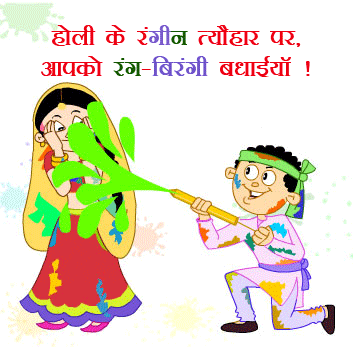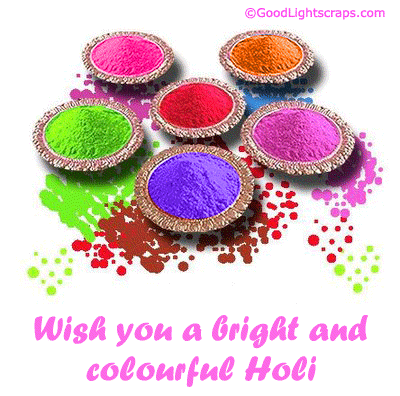
US Federal Holidays 2013
MAKE YOUR HOLIDAYS A MEMORABLE ONE!!!
Join with us for our best deals.
The Federal Holidays 2013 establishes the list of Public Holidays for the federal employees according to the Federal law (5 U.S.C. 6103). When a Holiday falls on a Sunday, the holiday is observed on Monday and when the Holiday falls on a Saturday, the holiday is observed on Friday.




RAVI SHANKAR GUPTA
Festivals in India are an essential part of people’s life. Festivals of India depict the rich cultural and heritage of the country. In India, a festival plays an important role in day to day life. They offer people a temporary stay from their daily routine. Here each, festival is celebrated with great pomp and show. The day on which particular festival is celebrated, has a special importance, and certain observations in it. So here are some of the most popular festival of India which show customs and traditions of particular country.




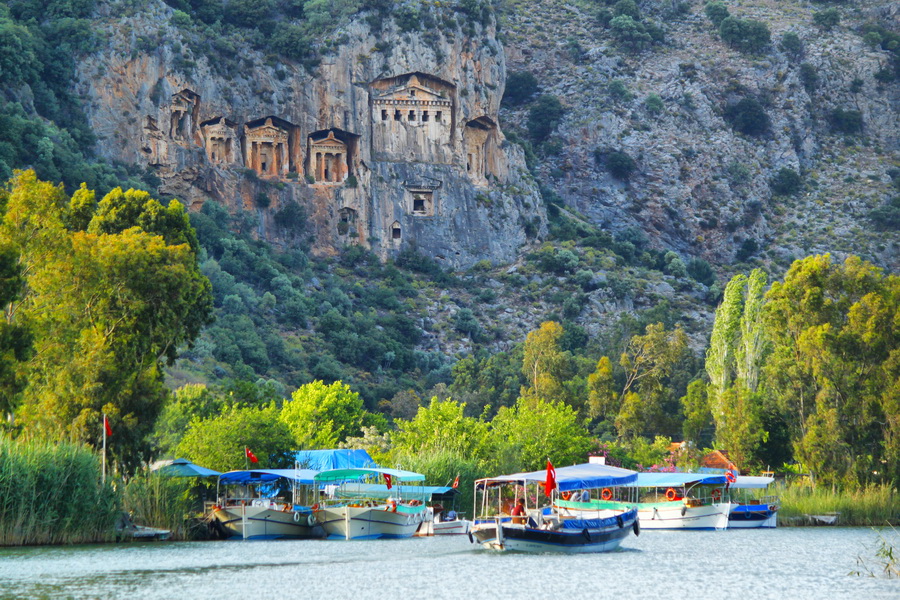



Holi is an ancient festival of India and was originally known as 'Holika'. The festivals finds a detailed description in early religious works such as Jaimini's Purvamimamsa-Sutras and Kathaka-Grhya-Sutras. Historians also believe that Holi was celebrated by all Aryans but more so in the Eastern part of India.
It is said that Holi existed several centuries before Christ. However, the meaning of the festival is believed to have changed over the years. Earlier it was a special rite performed by married women for the happiness and well-being of their families and the full moon (Raka) was worshiped.
Calculating the Day of Holi
There are two ways of reckoning a lunar month- 'purnimanta' and 'amanta'. In the former, the first day starts after the full moon; and in the latter, after the new moon. Though the amanta reckoning is more common now, the purnimanta was very much in vogue in the earlier days.
According to this purnimanta reckoning, Phalguna purnima was the last day of the year and the new year heralding the Vasanta-ritu (with spring starting from next day). Thus the full moon festival of Holika gradually became a festival of merrymaking, announcing the commencement of the spring season. This perhaps explains the other names of this festival - Vasanta-Mahotsava and Kama-Mahotsava.
Reference in Ancient Texts and Inscriptions
Besides having a detailed description in the Vedas and Puranas such as Narad Purana and Bhavishya Purana, the festival of Holi finds a mention in Jaimini Mimansa. A stone incription belonging to 300 BC found at Ramgarh in the province of Vindhya has mention of Holikotsav on it. King Harsha, too has mentioned about holikotsav in his work Ratnavali that was written during the 7th century.
The famous Muslim tourist - Ulbaruni too has mentioned about holikotsav in his historical memories. Other Muslim writers of that period have mentioned, that holikotsav were not only celebrated by the Hindus but also by the Muslims.
Reference in Ancient Paintings and Murals
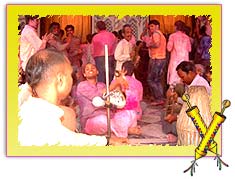 The festival of Holi also finds a reference in the sculptures on walls of old temples. A 16th century panel sculpted in a temple at Hampi, capital of Vijayanagar, shows a joyous scene of Holi. The painting depicts a Prince and his Princess standing amidst maids waiting with syringes or pichkaris to drench the Royal couple in coloured water.
The festival of Holi also finds a reference in the sculptures on walls of old temples. A 16th century panel sculpted in a temple at Hampi, capital of Vijayanagar, shows a joyous scene of Holi. The painting depicts a Prince and his Princess standing amidst maids waiting with syringes or pichkaris to drench the Royal couple in coloured water.
A 16th century Ahmednagar painting is on the theme of Vasanta Ragini - spring song or music. It shows a royal couple sitting on a grand swing, while maidens are playing music and spraying colors with pichkaris.
There are a lot of other paintings and murals in the temples of medieval India which provide a pictoral description of Holi. For instance, a Mewar painting (circa 1755) shows the Maharana with his courtiers. While the ruler is bestowing gifts on some people, a merry dance is on, and in the center is a tank filled with colored water. Also, a Bundi miniature shows a king seated on a tusker and from a balcony above some damsels are showering gulal (colored powders) on him.
Legends and MythologyIn some parts of India, specially in Bengal and Orissa, Holi Purnima is also celebrated as the birthday of Shri Chaitanya Mahaprabhu (A.D. 1486-1533). However, the literal meaning of the word 'Holi' is 'burning'. There are various legends to explain the meaning of this word, most prominent of all is the legend associated with demon king Hiranyakashyap.
Hiranyakashyap wanted everybody in his kingdom to worship only him but to his great disappointment, his son, Prahlad became an ardent devotee of Lord Naarayana. Hiaranyakashyap commanded his sister, Holika to enter a blazing fire with Prahlad in her lap. Holika had a boon whereby she could enter fire without any damage on herself. However, she was not aware that the boon worked only when she enters the fire alone. As a result she paid a price for her sinister desires, while Prahlad was saved by the grace of the god for his extreme devotion. The festival, therefore, celebrates the victory of good over evil and also the triumph of devotion.
Legend of Lord Krishna is also associated with play with colors as the Lord started the tradition of play with colours by applying colour on his beloved Radha and other gopis. Gradually, the play gained popularity with the people and became a tradition.
There are also a few other legends associated with the festival - like the legend of Shiva and Kaamadeva and those of Ogress Dhundhi and Pootana. All depict triumph of good over evil - lending a philosophy to the festival.
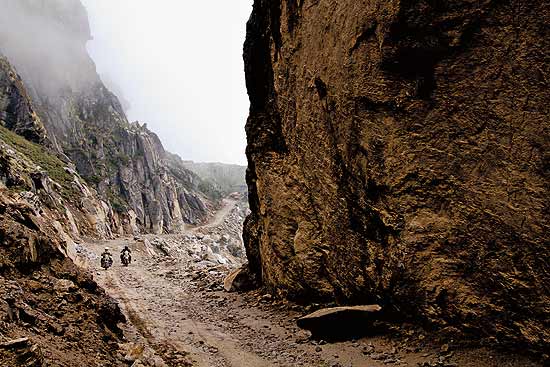
The rugged road to the twin villages of Dodra-Kwar in the Rupin valley. (Photograph by Harsh Man Rai)
1. Helmet Stories, (Spiti)
The great outdoors and the doughty saddle are old friends. But when the road ends at Spiti and the pack is led by trusted OT hands, the combination has a lot of torque. Helmet Stories, an outfit run by bikers Harsh Man Rai and Vir Nakai, customises luxury trips to several Himalayan outposts and the Western Ghats. But the journey to Spiti is in a league of its own. Starting from Chandigarh, the 12-day trail snakes around Sangla and Kalpa in the Baspa valley, halts at the Nako lake before winding up at Tabo, Dhangkar monastery, Kaza and finally at the Drilbu Retreat in Tandi, perched over the confluence of the rivers Chandra and Bhaga. The last stretch of 100km runs along (and often on) the riverbed, making it the perfect terrain for adventure motorcycling. Riders who want to take it up by a notch can add a 3-day detour (before Sangla) on the new road over the Chanshal pass to the villages of Dodra and Kwar in the Rupin valley. COST Rs 1,20,000, inclusive of a Royal Enfield Bullet, fuel, stay, great meals; Rs 20,000 for the Rupin valley detour CONTACT 9867639753, helmetstories.com
 The magnificent Gangkar Puensum, Bhutan’s highest mountain, shimmers in the afternoon light
2. Druk Path, Bhutan
The magnificent Gangkar Puensum, Bhutan’s highest mountain, shimmers in the afternoon light
2. Druk Path, Bhutan
We’re talking about one of the most beautiful countries in the world. And this trek is probably the most representative of the country’s physical beauty as well as its Tantric Buddhist culture. Taking in such sites as the famous Taktsang Palphug (Tiger’s Nest) Monastery, blue pine forests, beautiful lakes such as the Jimilang Tsho and Simkotra Tsho, as well as the towering peak of Gangkar Puensum, this trek is Bhutan in a nutshell. It’s best done from April to June and September to November. COST from $2,193 per person in a group of three for a six-day trek CONTACT +975-2333083, bhutangreentravel.com
 A Tarzan moment at the summer camp in Yercaud
3. Jungle Outback, (Yercaud)
A Tarzan moment at the summer camp in Yercaud
3. Jungle Outback, (Yercaud)
Youreka has been running adventure programmes for kids and adults for so long they are now virtually the village elders in the business. Those who’ve already experienced their wide-ranging hospitality, it’s time to get in touch again—and those who haven’t, well, we just told you. They run permanent camps as well as seasonal programmes at various locations around the country. Those in the South may already have checked out their Jungle Outback camp in Yercaud, but all ye living further away, why not give it a shot too? Set at a height of 5,100ft and surrounded by coffee plantations, the camp offers rock-climbing, rappelling, DIY camping, or simply relaxing in the wilderness. The tents are not luxurious, but clean and comfortable. TARIFF 2N/3D package Rs 5,250 per person, including all meals and two activities CONTACT 1800-103-3301, youreka.in
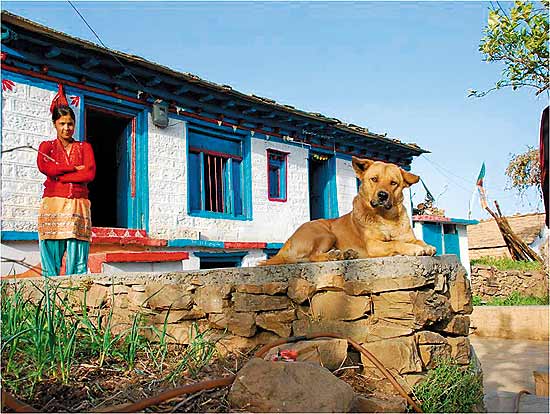 A lazy evening at a charming village near Almora
4. Itmenaan Village Walk, Kumaon
A lazy evening at a charming village near Almora
4. Itmenaan Village Walk, Kumaon
Hill stations are no longer the coolest cubbyholes they used to be. Sun-struck travellers who once fled the plains now flee the hill stations! Offering them refuge are remote rural idylls that live and breathe the true pahadi air. Kumaon has a few lovely trails. One such is a five-day trot across its north-eastern flanks, led by the good folks at Itmenaan Estate, near Almora. Winding its way upwards from Kathgodam, through the villages of Thikalna and Ganghet, where traditional homes have been spruced up to receive guests, the village walk arrives at its last pit stop, Itmenaan’s 100-year-old stone house, coddled by ten acres of pine, oak and rhododendrons in bloom. COST Rs 4,000 per person on twin-sharing basis, inclusive of stay, meals and guide CONTACT 011-26122509, itmenaanlodges.com
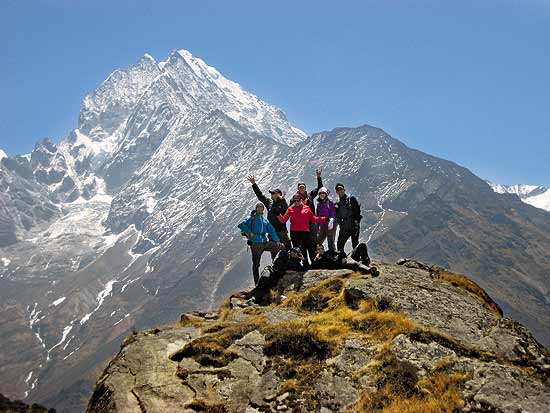 An all-women contingent on the Everest Base Camp trail
5. Everest Base Camp, (Nepal)
An all-women contingent on the Everest Base Camp trail
5. Everest Base Camp, (Nepal)
Looking to inject the long, desultory summer months with a dose of adventure? The brand-new Active Holiday Company could have the answer for you. This home-grown travel firm specialises in ‘activity-based holidays’ across multiple continents: from cycling trips in Cambodia, Italy, France, Austria, Germany, the Czech Republic, New Zealand and Laos (some even include canoeing and kayaking) to African safaris and a host of trekking, marathon and diving vacations. It also customises holidays for families, solo travellers and women. Closer home is an old favourite: the classic Everest Base Camp trek in Nepal. The 14-day, ‘challenging’ trek takes you through pine forests along the Dudh Kosi river, to Tengboche, Dingboche, along the Khumbu glacier, Kala Patthar and more. COST Rs 92,950; includes meals, stay, transfers, domestic flights CONTACT 9886681381, activeholidaycompany.com
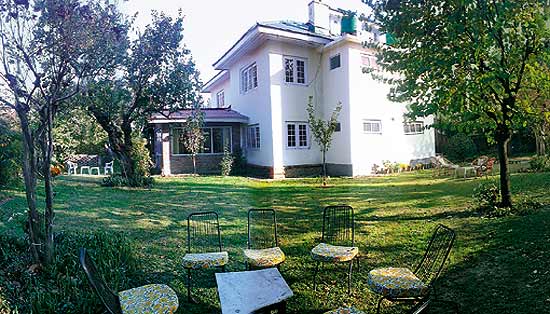 A lovely, lush garden at the Heritage House
6. Heritage House, (Srinagar)
A lovely, lush garden at the Heritage House
6. Heritage House, (Srinagar)
Over the years, Srinagar’s toniest and leafiest neighbourhood, Rajbagh, has gradually let tourism into its homes. Within easy distance of the city’s main attraction, the Dal lake and the busy boulevard that girdles it, this quiet residential area is lined with bungalows hidden from view by gardens overladen with apples and peaches, cherries and plums. Heritage House, which welcomed its first guest last year, is just such a place. A quaint six-room homestay, it’s run by the lovely Narboo family which also owns the iconic Hotel Shambhala in Leh. TARIFF Rs 4,500 for doubles, inclusive of breakfast CONTACT 9419177900, 9810035145, hotelshambhala.com
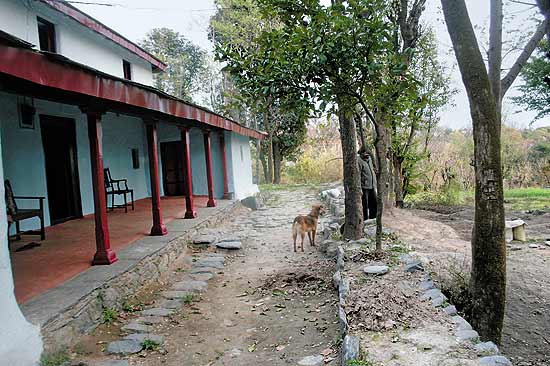 The rustic, yet charming homestead of Ballu. (Photograph by Bibek Bhattacharya)
7. The Ballu Homestay, Kangra
The rustic, yet charming homestead of Ballu. (Photograph by Bibek Bhattacharya)
7. The Ballu Homestay, Kangra
The Ballu is an old barn built near the village of Dari in Kangra, way back in 1903. A traditional mud structure, it was one of the few buildings in the Dharamsala region to survive the devastating earthquake of 1905. Now, it has been turned into a simple but charming homestay by KP and Seena, two long-time Malayali residents of the area. Set in the valley of the Chauran Nala, which drains the towering Mon peak of the Dhauladhar, this little place offers an authentic rural mudhouse experience. The couple provide delicious home-cooked meals and you could spend your time sitting around in the surrounding orchard, or go for walks up the valley and for picnics to the stream. TARIFF from Rs 700 doubles, inclusive of meals CONTACT 8679503494, facebook.com/theballuhomestay
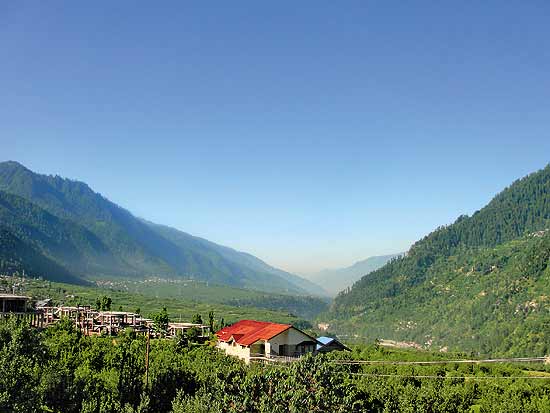 Karma Cottage, nestled in the Kullu valley
8. Karma Cottage (Manali)
Karma Cottage, nestled in the Kullu valley
8. Karma Cottage (Manali)
The folks behind the Raj-themed Karma Vilas hotel in Mussoorie have now branched out to that other great tourist magnet—Manali. Thankfully situated away from the main drag, this full-fledged family getaway is set amid apple orchards and offers clear views of Rohtang Pass. Accommodation is in a choice of the simpler Classic rooms or the more ‘luxurious’ Royal rooms and suites. There’s a nice restaurant on the premises, and the resort offers various other facilities that make for a good family experience, including wi-fi, a gaming area for children and an open air café. TARIFF from Rs 6,000 doubles CONTACT 9811404640, karmavilas.com/karma-cottage/accomodation.html
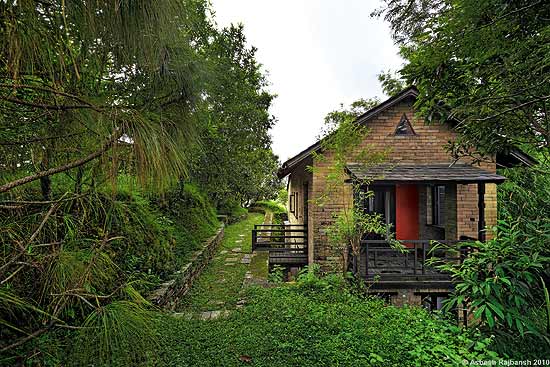 The cottages at Tiger Mountain, in the likeness of Nepali village homes
9. Tiger Mountain, Pokhara
The cottages at Tiger Mountain, in the likeness of Nepali village homes
9. Tiger Mountain, Pokhara
If you’re looking for a holiday in the hills that goes beyond the usual, yet is easy to plan, do consider Pokhara in Nepal. More specifically, just outside of Pokhara. Half an hour from the city, hanging on to the edge of a ridge up in the mountains, is the lovely Tiger Mountain Pokhara Lodge. Imitating a Nepali village with stone cottages clustered together, the property is anything but basic with elegant furniture, private balconies affording uninterrupted views of the Annapurna range and the valley, great meals created with organic ingredients, a pool, yoga and Ayurvedic treatments. And if you’re looking for a spot of action, it’s easy to head into town for some sightseeing and pretty lakeside meals in the several cafés around. TARIFF from $250 CONTACT +977-1 4426427, tigermountain pokhara.com
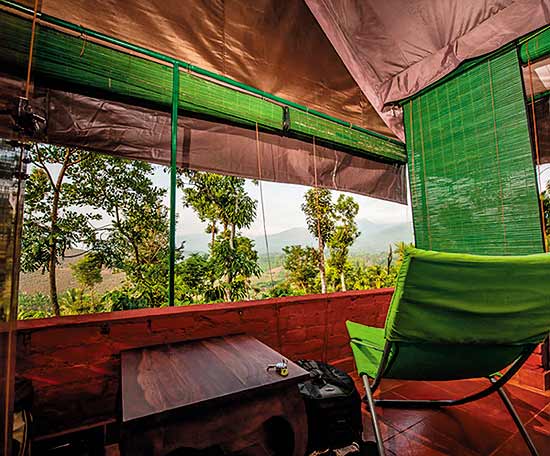 A sit-out at Grass Roots
10. Grass Roots, Wayanad
A sit-out at Grass Roots
10. Grass Roots, Wayanad
Wayanad is always magical. But if you manage to get yourself to this spectacularly located property, it may just seem miraculous. Set on a three-acre coffee estate at the foothills of Vythiri and surrounded by tea plantations, a bubbling stream and the jagged peaks of the Banasura range make Grass Roots a picture postcard you wish you could live in forever. Accommodation is in one of only five luxury tents, complete with all mod-cons. Activities at the camp include treks, village visits, Ayurvedic massages and plantation tours—there’s even an in-house ‘adventurist’ to set it all up for you. TARIFF Rs 6,500 doubles, all-inclusive; kids below eight stay free CONTACT 9845891013, grassrootswayanad.in
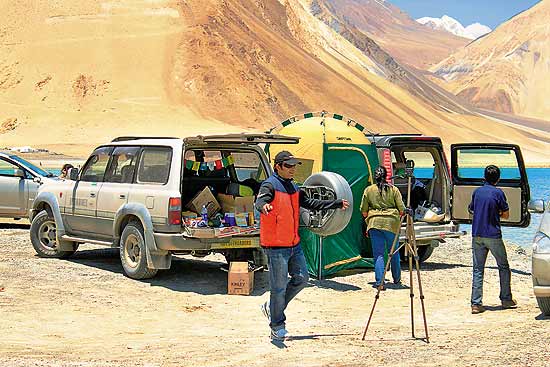 A quick, unscheduled pit stop en route to Ladakh
11. Great Ladakh Road Trip (Ladakh)
A quick, unscheduled pit stop en route to Ladakh
11. Great Ladakh Road Trip (Ladakh)
Both Kashmir and Ladakh make a compelling case for long-distance driving holidays. But if the fear of being stranded without help (in case the car breaks down) has prevented you from hitting the pedal, here’s your chance to wheel around the bend. This June, Adventures Overland is flagging off a 13-day self-drive trip from Manali to Srinagar. En route are Jispa village, Leh, Pangong Tso, Nubra valley, Turtuk and Kargil, and the many rivers and high passes that make this one of the world’s best routes. COST Rs 65,000 per person on twin-sharing basis; includes meals, stay, backup team, permits, etc, excludes fuel CONTACT 0124-4046316, adventuresoverland.com
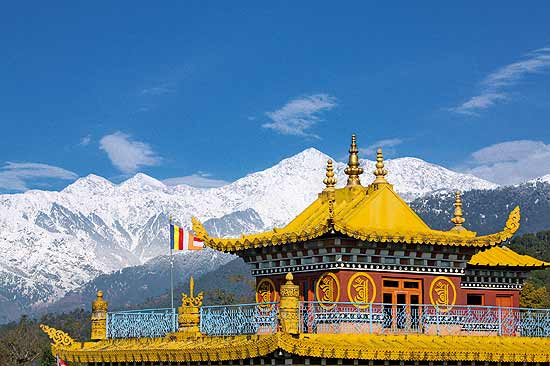 The Dhauladhar rise behind the Deer Park’s gilded, pagoda-style roof
The Dhauladhar rise behind the Deer Park’s gilded, pagoda-style roof

The rugged road to the twin villages of Dodra-Kwar in the Rupin valley. (Photograph by Harsh Man Rai)
1. Helmet Stories, (Spiti)
The great outdoors and the doughty saddle are old friends. But when the road ends at Spiti and the pack is led by trusted OT hands, the combination has a lot of torque. Helmet Stories, an outfit run by bikers Harsh Man Rai and Vir Nakai, customises luxury trips to several Himalayan outposts and the Western Ghats. But the journey to Spiti is in a league of its own. Starting from Chandigarh, the 12-day trail snakes around Sangla and Kalpa in the Baspa valley, halts at the Nako lake before winding up at Tabo, Dhangkar monastery, Kaza and finally at the Drilbu Retreat in Tandi, perched over the confluence of the rivers Chandra and Bhaga. The last stretch of 100km runs along (and often on) the riverbed, making it the perfect terrain for adventure motorcycling. Riders who want to take it up by a notch can add a 3-day detour (before Sangla) on the new road over the Chanshal pass to the villages of Dodra and Kwar in the Rupin valley. COST Rs 1,20,000, inclusive of a Royal Enfield Bullet, fuel, stay, great meals; Rs 20,000 for the Rupin valley detour CONTACT 9867639753, helmetstories.com
 The magnificent Gangkar Puensum, Bhutan’s highest mountain, shimmers in the afternoon light
2. Druk Path, Bhutan
The magnificent Gangkar Puensum, Bhutan’s highest mountain, shimmers in the afternoon light
2. Druk Path, Bhutan
We’re talking about one of the most beautiful countries in the world. And this trek is probably the most representative of the country’s physical beauty as well as its Tantric Buddhist culture. Taking in such sites as the famous Taktsang Palphug (Tiger’s Nest) Monastery, blue pine forests, beautiful lakes such as the Jimilang Tsho and Simkotra Tsho, as well as the towering peak of Gangkar Puensum, this trek is Bhutan in a nutshell. It’s best done from April to June and September to November. COST from $2,193 per person in a group of three for a six-day trek CONTACT +975-2333083, bhutangreentravel.com
 A Tarzan moment at the summer camp in Yercaud
3. Jungle Outback, (Yercaud)
A Tarzan moment at the summer camp in Yercaud
3. Jungle Outback, (Yercaud)
Youreka has been running adventure programmes for kids and adults for so long they are now virtually the village elders in the business. Those who’ve already experienced their wide-ranging hospitality, it’s time to get in touch again—and those who haven’t, well, we just told you. They run permanent camps as well as seasonal programmes at various locations around the country. Those in the South may already have checked out their Jungle Outback camp in Yercaud, but all ye living further away, why not give it a shot too? Set at a height of 5,100ft and surrounded by coffee plantations, the camp offers rock-climbing, rappelling, DIY camping, or simply relaxing in the wilderness. The tents are not luxurious, but clean and comfortable. TARIFF 2N/3D package Rs 5,250 per person, including all meals and two activities CONTACT 1800-103-3301, youreka.in
 A lazy evening at a charming village near Almora
4. Itmenaan Village Walk, Kumaon
A lazy evening at a charming village near Almora
4. Itmenaan Village Walk, Kumaon
Hill stations are no longer the coolest cubbyholes they used to be. Sun-struck travellers who once fled the plains now flee the hill stations! Offering them refuge are remote rural idylls that live and breathe the true pahadi air. Kumaon has a few lovely trails. One such is a five-day trot across its north-eastern flanks, led by the good folks at Itmenaan Estate, near Almora. Winding its way upwards from Kathgodam, through the villages of Thikalna and Ganghet, where traditional homes have been spruced up to receive guests, the village walk arrives at its last pit stop, Itmenaan’s 100-year-old stone house, coddled by ten acres of pine, oak and rhododendrons in bloom. COST Rs 4,000 per person on twin-sharing basis, inclusive of stay, meals and guide CONTACT 011-26122509, itmenaanlodges.com
 An all-women contingent on the Everest Base Camp trail
5. Everest Base Camp, (Nepal)
An all-women contingent on the Everest Base Camp trail
5. Everest Base Camp, (Nepal)
Looking to inject the long, desultory summer months with a dose of adventure? The brand-new Active Holiday Company could have the answer for you. This home-grown travel firm specialises in ‘activity-based holidays’ across multiple continents: from cycling trips in Cambodia, Italy, France, Austria, Germany, the Czech Republic, New Zealand and Laos (some even include canoeing and kayaking) to African safaris and a host of trekking, marathon and diving vacations. It also customises holidays for families, solo travellers and women. Closer home is an old favourite: the classic Everest Base Camp trek in Nepal. The 14-day, ‘challenging’ trek takes you through pine forests along the Dudh Kosi river, to Tengboche, Dingboche, along the Khumbu glacier, Kala Patthar and more. COST Rs 92,950; includes meals, stay, transfers, domestic flights CONTACT 9886681381, activeholidaycompany.com
 A lovely, lush garden at the Heritage House
6. Heritage House, (Srinagar)
A lovely, lush garden at the Heritage House
6. Heritage House, (Srinagar)
Over the years, Srinagar’s toniest and leafiest neighbourhood, Rajbagh, has gradually let tourism into its homes. Within easy distance of the city’s main attraction, the Dal lake and the busy boulevard that girdles it, this quiet residential area is lined with bungalows hidden from view by gardens overladen with apples and peaches, cherries and plums. Heritage House, which welcomed its first guest last year, is just such a place. A quaint six-room homestay, it’s run by the lovely Narboo family which also owns the iconic Hotel Shambhala in Leh. TARIFF Rs 4,500 for doubles, inclusive of breakfast CONTACT 9419177900, 9810035145, hotelshambhala.com
 The rustic, yet charming homestead of Ballu. (Photograph by Bibek Bhattacharya)
7. The Ballu Homestay, Kangra
The rustic, yet charming homestead of Ballu. (Photograph by Bibek Bhattacharya)
7. The Ballu Homestay, Kangra
The Ballu is an old barn built near the village of Dari in Kangra, way back in 1903. A traditional mud structure, it was one of the few buildings in the Dharamsala region to survive the devastating earthquake of 1905. Now, it has been turned into a simple but charming homestay by KP and Seena, two long-time Malayali residents of the area. Set in the valley of the Chauran Nala, which drains the towering Mon peak of the Dhauladhar, this little place offers an authentic rural mudhouse experience. The couple provide delicious home-cooked meals and you could spend your time sitting around in the surrounding orchard, or go for walks up the valley and for picnics to the stream. TARIFF from Rs 700 doubles, inclusive of meals CONTACT 8679503494, facebook.com/theballuhomestay
 Karma Cottage, nestled in the Kullu valley
8. Karma Cottage (Manali)
Karma Cottage, nestled in the Kullu valley
8. Karma Cottage (Manali)
The folks behind the Raj-themed Karma Vilas hotel in Mussoorie have now branched out to that other great tourist magnet—Manali. Thankfully situated away from the main drag, this full-fledged family getaway is set amid apple orchards and offers clear views of Rohtang Pass. Accommodation is in a choice of the simpler Classic rooms or the more ‘luxurious’ Royal rooms and suites. There’s a nice restaurant on the premises, and the resort offers various other facilities that make for a good family experience, including wi-fi, a gaming area for children and an open air café. TARIFF from Rs 6,000 doubles CONTACT 9811404640, karmavilas.com/karma-cottage/accomodation.html
 The cottages at Tiger Mountain, in the likeness of Nepali village homes
9. Tiger Mountain, Pokhara
The cottages at Tiger Mountain, in the likeness of Nepali village homes
9. Tiger Mountain, Pokhara
If you’re looking for a holiday in the hills that goes beyond the usual, yet is easy to plan, do consider Pokhara in Nepal. More specifically, just outside of Pokhara. Half an hour from the city, hanging on to the edge of a ridge up in the mountains, is the lovely Tiger Mountain Pokhara Lodge. Imitating a Nepali village with stone cottages clustered together, the property is anything but basic with elegant furniture, private balconies affording uninterrupted views of the Annapurna range and the valley, great meals created with organic ingredients, a pool, yoga and Ayurvedic treatments. And if you’re looking for a spot of action, it’s easy to head into town for some sightseeing and pretty lakeside meals in the several cafés around. TARIFF from $250 CONTACT +977-1 4426427, tigermountain pokhara.com
 A sit-out at Grass Roots
10. Grass Roots, Wayanad
A sit-out at Grass Roots
10. Grass Roots, Wayanad
Wayanad is always magical. But if you manage to get yourself to this spectacularly located property, it may just seem miraculous. Set on a three-acre coffee estate at the foothills of Vythiri and surrounded by tea plantations, a bubbling stream and the jagged peaks of the Banasura range make Grass Roots a picture postcard you wish you could live in forever. Accommodation is in one of only five luxury tents, complete with all mod-cons. Activities at the camp include treks, village visits, Ayurvedic massages and plantation tours—there’s even an in-house ‘adventurist’ to set it all up for you. TARIFF Rs 6,500 doubles, all-inclusive; kids below eight stay free CONTACT 9845891013, grassrootswayanad.in
 A quick, unscheduled pit stop en route to Ladakh
11. Great Ladakh Road Trip (Ladakh)
A quick, unscheduled pit stop en route to Ladakh
11. Great Ladakh Road Trip (Ladakh)
Both Kashmir and Ladakh make a compelling case for long-distance driving holidays. But if the fear of being stranded without help (in case the car breaks down) has prevented you from hitting the pedal, here’s your chance to wheel around the bend. This June, Adventures Overland is flagging off a 13-day self-drive trip from Manali to Srinagar. En route are Jispa village, Leh, Pangong Tso, Nubra valley, Turtuk and Kargil, and the many rivers and high passes that make this one of the world’s best routes. COST Rs 65,000 per person on twin-sharing basis; includes meals, stay, backup team, permits, etc, excludes fuel CONTACT 0124-4046316, adventuresoverland.com
 The Dhauladhar rise behind the Deer Park’s gilded, pagoda-style roof
12. Deer Park Institute, Himachal
The Dhauladhar rise behind the Deer Park’s gilded, pagoda-style roof
12. Deer Park Institute, Himachal
A couple of weeks of Tibetan language courses, or a spot of Mahamudra meditation, or learning calligraphy or ikebana in the lap of the verdant mountains of Kangra. Sounds like a perfect, worthy summer vacation? You can do all this and more at the Deer Park Institute in the small town of Bir in Himachal. Established in 2006, Deer Park is a project under the Siddhartha’s Intent Society. It offers a host of artistic and cultural courses through the year completely free of charge (donations are appreciated though). From readings of ancient Tamil Buddhist literature to enactment of Marathi folktales, there’s hardly a dull moment, and you could even go paragliding or trekking in the Dhauladhar range. CONTACT 01984-268508, deerpark.in
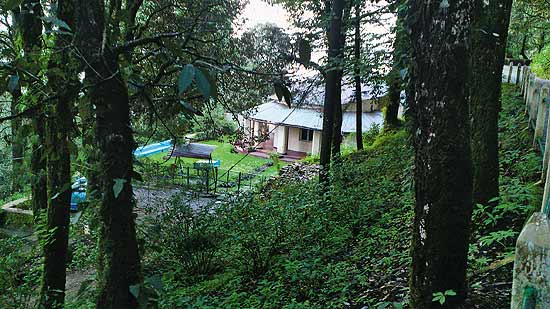 The Seagreen Lodge. (Photograph by Sanjeev Kamdar)
13. Benog Tibba, (Mussoorie)
The Seagreen Lodge. (Photograph by Sanjeev Kamdar)
13. Benog Tibba, (Mussoorie)
This one’s for birding enthusiasts. The Bombay Natural History Society (BNHS), dedicated to the conservation of nature, this month has on offer among its several nature trails and camps, birdwatching at Benog Tibba in the Benog Wildlife Sanctuary in Mussoorie. Part of the Rajaji National Park, the hill’s pine-clad slopes are home to a staggering assortment of birds, including the black-breasted sunbird, great barbet, red-billed and yellow-billed magpie, white-capped water redstart, mountain hawk-eagle and many, many more. The guided four-day trek involves some uphill walks that aren’t too tough, but would require some stamina. This trip is scheduled for April 20–24, so hurry. COST Rs 12,500 for members/Rs 13,100 for non-members; includes accommodation at Seegreen Lodges, all meals, transfers to and from Delhi, permits and entry to the park CONTACT 022-22821811, bnhs.org
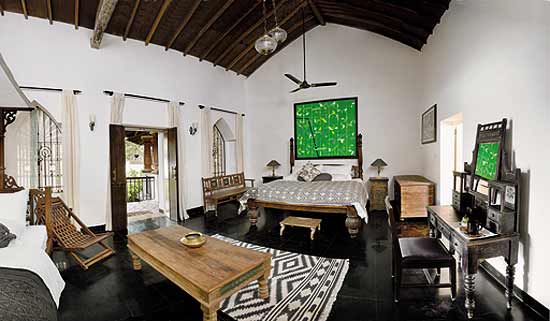 Warm, soothing tones in a spacious bedroom at Terra Rosa. (Photograph by Amit Pasricha)
14. Terra Rosa, (Goa)
Warm, soothing tones in a spacious bedroom at Terra Rosa. (Photograph by Amit Pasricha)
14. Terra Rosa, (Goa)
Yes, Goa’s going to be warm at this time of the year. But to compensate is peace and quiet and a stunningly renovated Portuguese villa all to yourself. Terra Rossa is set on Chorao island, lush with greenery and dotted with a few churches and the odd house. The property is a labour of love for architect Amrita and her husband Vineet. The sprawling, airy mansion, centred around a leafy courtyard and a soothing water body, displays tasteful interiors, while catering to all comforts. There are four bedrooms, a modern kitchen, laundry, housekeeping and a swimming pool too—everything to ensure you don’t leave in a hurry. TARIFF from Rs 17,000 per night for the villa; minimum stay one week CONTACT 9822146880, contact@luxurygoavillas.com
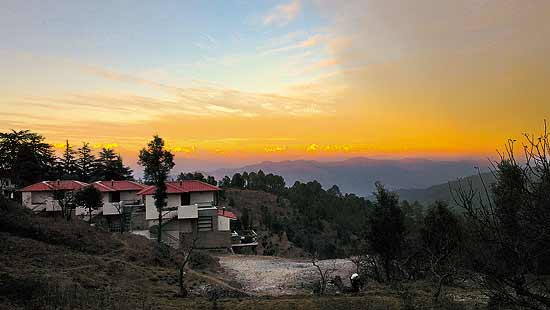
The new cottages at Sitla Estate in the twilight
15. Sitla Estate, (Kumaon)
You’ve read about this little lodge high up in the Kumaon hills a few hundred times in this magazine. And each time we’ve featured it, it’s been unapologetically: and that’s because not only is Sitla Estate lovely, there’s always something new and thrilling to say about it. This summer, Sitla faithfuls can expect a surprise when they make their annual pilgrimage to Vikram Maira’s estate—a clutch of chic new cottages awaits them. In contrast to the stone-and-wood, rustic aesthetic of the cottages that the familiars know, these are done in contemporary style—six spacious suites with modern bathrooms, all opening out to a private sitout. TARIFF from Rs 8,000 doubles, all inclusive CONTACT 05942-286330, sitlaestate.net
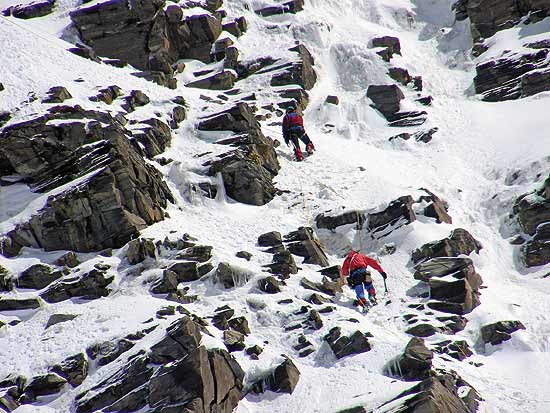 An almost vertical climb upto Traill’s Pass
16. Traill’s Pass, Kumaon
An almost vertical climb upto Traill’s Pass
16. Traill’s Pass, Kumaon
Of all the hundreds of treks possible in the Himalaya, arguably the best are those that cross the Great Himalayan Range itself. And there are few as challenging or as spectacular as Traill’s Pass in Kumaon, which connects the watersheds of the Pindar and the Gori Ganga rivers. A technical climb across the bergshrunds and ice cliffs of the Pindari glacier, this pass was named after the British administrator G.W. Traill, who crossed it in 1830 to try and open up a new trading route with Tibet. Looking out at Nanda Devi, Nanda Kot and a host of other Himalayan giants, Traill’s Pass, or Pindari Kanda, is a classic Himalayan trek. Aquaterra is organising this trek from May 24 to June 12. COST Rs 96,000 plus taxes per head CONTACT 011-29212641, aquaterra.in
 Meghalaya’s gloriously green environs. (Photograph by Kalyan Verma)
17. Overland Tour, Meghalaya
Meghalaya’s gloriously green environs. (Photograph by Kalyan Verma)
17. Overland Tour, Meghalaya
The unique location of Meghalaya’s Garo hills makes it the wettest region in the country. Not surprisingly, this has resulted in an extensive and lush forest cover. With the presence of animals like the palm civet, golden cat and slow loris, the state is richly endowed with biological diversity. Wishbone’s 10-day overland journey takes you into the heart of Meghalaya with visits to the Baghmara and Balpakram sanctuaries, and places such as Karwani, a butterfly hotspot. Local knowledge as well as a team of wildlife experts play a part in informing the journey, with homestays, an introduction to local customs and traditional food adding to the experience. You can go birdwatching, or get a crash course in the state’s endemic butterflies and visit pristine sites like the Rongdok waterfall. The trip is planned between April 19 and 28 this year. COST Rs 54,000 per person, all-inclusive CONTACT 9886169698, wishbone.co.in
 Planter’s bungalow on a hill
18. Gabroopurbat, (Assam-Nagaland)
Planter’s bungalow on a hill
18. Gabroopurbat, (Assam-Nagaland)
In an obscure corner at the foot of the Naga hills, on the border that divides Nagaland and Assam, lies a tempting holiday option for the summer. A nineteenth-century planter’s bungalow atop a hill and amid rolling tea gardens in Gabroopurbat has opened its doors to the world with the promise of a peaceful, homey stay. The Retreat on Hill Gabroopurbat offers four spacious air-conditioned rooms with attached bathrooms and a common area. And while it also provides an ‘entertainment arena’—a small library, a card table and a gramophone—it would be a shame not to venture out and enjoy wildlife spotting at Kaziranga (2hrs away) or Dissoi Valley (20kms away) or the scenic Majuli Island on the Brahmaputra (90mins away). TARIFF from Rs 3,000 CONTACT 9830822937, gabroopurbat.com
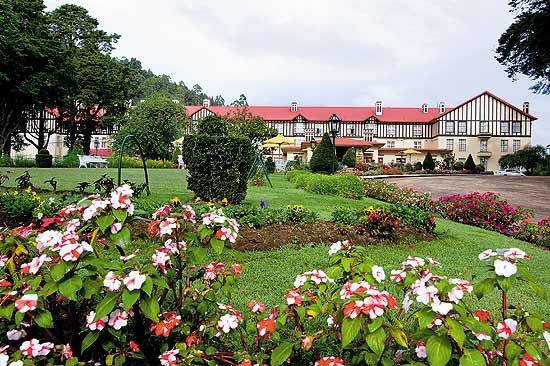 The blooming gardens of the Grand Hotel at Nuwara Eliya . (Photograph by Getty Images, From Outlook Traveller April Issue, 2013)
19. Nuwara Eliya, Sri Lanka
The blooming gardens of the Grand Hotel at Nuwara Eliya . (Photograph by Getty Images, From Outlook Traveller April Issue, 2013)
19. Nuwara Eliya, Sri Lanka
April is not the cruellest month—not in Nuwara Eliya anyway. Planted in Sri Lanka’s tea-growing upcountry hills, the colonial resort town blooms in the soft summer sun. Roses and poppies, sweet william and sunflowers run riot in the sprawling Victoria Park and Hakgala Botanical Garden, and on the lawns of the Colonial Hotel, British Club, Grand Hotel and the Hill Club. Private grounds teem too with blossoms of every imaginable hue as locals prepare for the annual flower shows and competitions. Our only advice: avoid the mid-month rush, when the country celebrates its New Year. COST $2,400 for a couple for 8 days, inclusive of stay at a boutique hotel, most meals, sightseeing and local transport CONTACT 8974086709, getoffurass.com
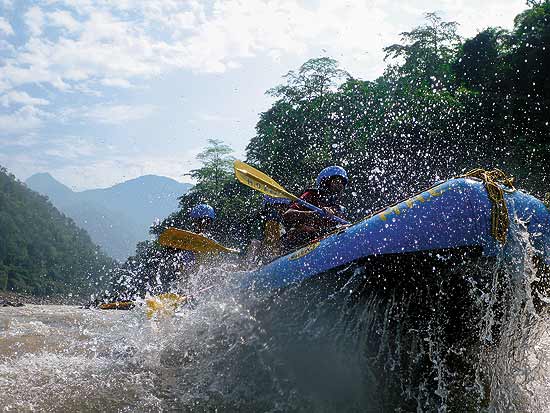 Young riders of the storm on the Tons
20. The Summer Odyssey, (Garhwal)
Young riders of the storm on the Tons
20. The Summer Odyssey, (Garhwal)
Summer camps are often not camps at all. But Himalayan Outward Bound’s The Summer Odyssey promises to put campfires and rafting (in the Tons), pitching tents and waking up to sweeping views of the mountains (of Garhwal) back on the agenda. A ten-day expedition for children aged between 14 and 16, the Odyssey’s many adventures also include a chance to live the village life—perhaps a first for many city-bred kids (May 26-June 4). A fine way to make new friends and pick up a few life skills, there’s a separate camp for younger children too; at least, 12 years old and accompanied by a parent (June 23-July 2). COST Rs 27,700 per person, all inclusive CONTACT 011-26196082, outwardboundindia.com

Join with us for our best deals.
The Federal Holidays 2013 establishes the list of Public Holidays for the federal employees according to the Federal law (5 U.S.C. 6103). When a Holiday falls on a Sunday, the holiday is observed on Monday and when the Holiday falls on a Saturday, the holiday is observed on Friday.




Hindu Paper
1.03. 2013
Introduction
In the Hindu society, exceptional historical figures and important seasons are honored through a manifold of vibrant festivals that are held throughout the year. During these celebrations the Hindu people partake on many rituals, worship, magical acts, drinking, eating, volunteering, and praying (“Hindu Holiday and Festivals”).The atmosphere is always said to be blissful and pleasurable. Moreover, one of the essential reasons for the festivals within the Hindu culture is to forge a healthy sense of belonging by peacefully bringing together individuals, families, and communities (“Hindu Holiday and Festivals”).
Hindu Festivals
Of the infinite number of festivals held in Hinduism, three main types are conducted for the celebration or remembrance of momentous events in the lives of deities, of birthdays of particular holy persons, and of seasons or customs within the Indian culture (“Important Festivals”). Furthermore, the following paragraphs will discuss one Hindu festival from each of the main types of festivals of India
HOLI: A Seasonal
Festival
Purpose and meaning Holi, also known as the “Festival of Colors,” is an annual event beginning on the day after the full moon in the Hindu month Phalguna, or early March (“Holi”). Originally Holi was an agricultural festival and its purpose was to celebrate the arrival of spring (“Holi”).Today, the merry holiday is no longer an event to celebrate just the beautiful elements of spring; it is also a time of ignoring social norms, thereby allowing the Hindus the opportunity to free themselves from the regulations and restrictions of the Hindu society. In addition, Holi, the second most important festival in India
In other words, during this celebration, vulgar language and behavior is permitted without penalty, and as the events progress, people are allowed to run wild, curse, shout, and create total mayhem in the streets of India
Rituals
In addition to the loosening of social norms, other significant rituals performed during the festival represent or aid in portraying the significance of this holiday. For instance, a vital ritual of Holi is applying colored water and powders on family and friends in celebration of the magnificent colors of spring.
Bonfires are also held at the rising of the moon to commemorate a noteworthy occasion in Hindu Mythology.
The History of Holi: different accounts of the origin of Holi
. Specifically, the commemorating done at the bonfire is in honor of a character of ancient Hindu history, named Holika. As the legend is told, an evil king, Hiranyakashipu, demanded his son, Prahlad to stop worshiping the god Vishnu (“Holi”). Ultimately, the king’s efforts to try to stop his son was in vain, so the king challenged his son to sit on a pyre with his wicked aunt Holika, who was said to be invincible to the hazards of fire. Nonetheless, as the flames of the fire surrounded both Prahlad and his Aunt, Prahlad prayed to Vishnu, and in the end Holika was left to burn, while Prahlad was saved. Before Holika was burned to death, she apologized for her heinous behavior, and Prahald promised Holika that she would be remembered every year through Holi. Therefore, Holi was created in remembrance of that promise.
. In the ancient Hindu period there was a different account of how the Holi festival originated. Great cannibals were known to India
. An alternative account of the basis of the Holi involves the well-known Hindu god, Shiva. Because Shiva often prayed and meditated, his faith was tested by the God of Love, Madana, more specifically, she appeared to him as a glorious nymph. Shiva recognized Madana and angrily shot fire from his third eye at her, diminishing her into ashes. This story is known as one of the explanations for Holi’s bonfires (“Holi”).
Ancient vs. Modern- Day Hindu Festivals: Their similaries and differcences
The rituals and customs of the Holi festival today are not much different than it was thousands of years ago in India
Mahashivaratri: A Festival in Honor of a Deity
Purpose and Meaning
In Hinduism, not only are festivals held for specific seasons, but they are also held in honor of an event in the life of particular deity or holy person. For instance, the festival of Mahashivaratri or Shiva Ratri, is a magnificent festival for the infamous Hindu god Shiva. The festival occurs on February 26 or on the 14th day of the dark part of the lunar month of Phalguna (“Mahashivarati”). This festival focuses on devoting time to honor and to worship Shiva.
Rituals
Meditation, fasting, and vigils are held throughout the holiday. While temples attract devotees to pray and meditate to Shiva, inside homes, families bathe the Shiva Linga with milk and honey, and offer it Bilva leaves, fruits, and other sacred foods (“Mahashivarati”). In addition, hymns are sung and an offering of grain is thrown into fire while the devotees are praising Shiva. At the end of the celebration, a Vigil is held at night for further meditation and prayer to Shiva.
The History of Mahashivaratri
Lastly, during Mahashivaratri, it is part of the ritual to stay up all night. This specific practice is in commemoration of the legend of how Shiva unintentionally unearthed a poison that was supposed to demolish the world. Shiva had the strength to take poison and still survive, but part of his survival was due to the gods who stayed up through the night entertaining him throughout the night, and this lack of sleep was apart of his healing. Therefore, today’s devotees or followers of Shiva stay awake through the night just as the gods helped Shiva to stay awake as a commemoration of this significant event.
. In addition to the staying up all night, the Bilva leaves that are offered to Shiva are in honor of him and of the Hindu story of the Hunter who climbed up a Bilva tree to escape a hungry lion (“Mahashivarati”). For the entire night the hunter stayed awake by picking Bilva leaves from the tree, which happened to collect at the tree’s bottom on top of a Shiva Linga that was already living there. Shiva who was pleased with the offering, saved the hunter in return. Therefore, the practice of offering Bilva leaves to Shiva and staying up all night worshiping him are done to honor him on this special holiday (“Mahashivarati”).
Sri Krishna Janmashthami: A Festival to Venerate the Birthday of a Holy Person
Purpose and Meaning
Sri Krishna Janmashthami is a festival held to celebrate the birth of Lord Krishna, an eighth incarnation of the Lord Vishnu who was born in the ‘Rohini’ star. Krishna means the ‘most attractive’, and he is known to be the divinity and the energy that pulls everything to it (“Sri Krishna Janmashthami”). Janmashthami is celebrated annually on the eighth day in the month of Shravana, from August to September. The commemoration of Sir Krishna lasts for two days: the first day, Krishnashtami or Gokulashtami and the second day, Kalastami or Janmashtami. In essence, Janmashthami aids in honoring the birth of Lord Krishna, which is significant because if it were not for his birth, then the wicked King of Mathura
Rituals
The celebration of this holiday starts with the bathing of the idol of Lord Krishna. He then is dressed in elaborately designed yellow garb and beautiful jewelry. He is also offered special bhog which consists of milk and fruits (“Sri Krishna Janmashthami”). The devotees of Krishna sings bhajans, and chants hymns, offer special pooja and aarti to receive the blessings of the deity, as well as fasts until midnight (the time Krishna was said to be born). In addition, most of the foresaid rituals performed in devotion to Krishna take place in the temples dedicated to him. On this holiday, the many temples for the worship of Krishna are decorated with fruit and flowers, while doorposts are anointed with sandalwood paste, and ceramic pots filled with milk are hung from tall poles (“Sri Krishna Janmashthami”).
The History of Sir Krishna’s Birth
Kansa, the son of King Ugrasen, was a rude and cruel child that threw his father in jail, and, as a result, became the king. His sister, Devki, married a high ranking officer and had children. Unfortunately, after discovering that their eighth child would be born and would kill Kansa, Krishna , in fear, threw both his sister and her husband into prison, and killed six of their newborns. The seventh child could not die due to it having a different mother. Once the eighth child was born the prison gates flew open; the guards fell asleep, and the parents escaped. Subsequently, after a command to take the child to another family, the eighth child was given to the new couple. Once he grew up, he killed Kansa, therefore freeing all the people of Matuhura from his despotic regime. The celebration of the birth of Kishna is honored because through this happening, the Matuhura people were freed.
Works Cited
10. Lohri
Lohri is an enormously popular festival celebrated by Punjabi’s with great enthusiasm. It is celebrated throughout the Punjab and in chunks of Himachal Pradesh, Delhi and Jammu also. It is celebrated on 13th January and signifies the beginning of the end of winters. It is particularly celebrated for successful harvest of Rabi crops. On this day people exchange gifts with each other and in the evening they gather around the bonfire and offer til, popcorn and peanuts to the flames. Every one enjoy with great joy by singing songs, dancing etc.
9. Ram Navami
Ram Navmi is a Hindu festival celebrated all over India. It is celebrated because on this day Lord Ram was born to king Dasharatha in Ayodhya. He was the 7th avatar of Lord Vishnu. It is celebrated on the ninth day of the month of chitra in Hindu calendar. On this day people go to temple and keep fast ask for excellence. This festival is celebrated with great eagerness and excitement. On this day people take their children out on roads to watch other people dressed up like different gods and move in a procession on roads.
8. Maha Shivratari
Maha Shivratari means “The Great Night of SHIVA”. It is a Hindu festival celebrated every year in devotion of Lord Shiva. It is a festival celebrated all over the country with great pleasure and delight. During this day people visit Shiv temple and offer Water, Beal Patra, Fruits, coconut and Flowers on the Shivling and his celestial partner Lord Parvati. Some people keep fast on this day to fulfill their wish.
7. Ganesh Chaturthi
Ganesh Chaturthi is a festival of hindus and is celebrated on occasion of birthday of lord Ganesh. Lord Ganesh the son of “Lord Shiv and Parvati” is widely worshipped as the god of wisdom and prosperity. The model of Lord ganesha starts to make 2-3 months before Ganesh Chaturthi. On the day of this festival people take their God (Lord Ganesha) to their home and placed them in their home temple and decorate them with flowers, to pay them tribute. People offer them Fruits Coconut, jaggery, 21 modakas, 21 durva and flowers, This festival is celebrated for 10 days starting on Shukla Chaturthi and ending on Ananta Chaturdashi. Then on 11th day the image is taken on streets while dancing and singing to immersed in a river or sea symbolizing a formal see-off of the Lord Ganesha and taking the promise to come back again next year to spread happiness and love in the hearts of every people of India. This festival is celebrated all over India, it is most ornate in Maharashtra, Andhra Pradesh, Karnataka and Goa.
6. Onam
Onam is a Hindu festival. It is the fruitage featival of Kerela which is celebrated with great fun and dedication by the peoples of Kerela without any difference of cast and religion across India and the World. This feastival falls between August- September and last for 10 days. Being a harvest festival, it is time to thank God for the plentiful crops. A number of ceremonies are performed during the ten days which include worshipping, music, dances, sports, boat races and good food.
5. Dussehra
Dussehra is a Hindu festival. It celebrates the victory of good over evil. According to Hindu Mythology it is assumed that it was on this day that Lord Rama killed Ravana and saved his wife Sita. In other words, it celebrates the success of Lord Rama over Ravana. This festival is celebrated all over India with great interest. Today, in India we celebrate Dussehra by burning statues of Ravana, his giant brother Kumbhkarna and son Meghnath with fireworks and crackers. A large mass of people come together to see this fair. This celebration is done in the evening and on this day it is gazetted holiday in India.
4. Janamashtmi
Janamashtmi is an illustrious Hindu festival celebrated all over India with great dedication and eagerness on the ashtmi of Krishna Paksh in Bhadon. It is the birth anniversary of Lord Krishna the eighth avatar of Lord Vishnu. One of the most acclaimed personifications in the Hindu Dharma. On this day people keep fast and stay up until the midnight, the time when Krishna is believed to have been born. On this day people gathered in the temples for devotional songs and dance. Statue of lord Krishna infancy is placed in swings and cradles in temples and homes. In the south western state of Maharashtra, people hang a pot high above the ground and groups of young people form a pyramid and try to reach the pot and break it. Lord Krishna’s, Birth place Mathura and Vrindavan celebrate this occasion with great splendor and show. On this day Raslilas or religious plays are performed to reinvent occurrences from the life of Krishna.
3. Holi
Holi is festival of colors that brings to the fore various shades of friendship. It is one of the major festival of India. It brings with it utmost joy and warmth. Holi is celebrated on the full moon day in the month of Phalgun which marks the beginning of Spring Season. According to Hindu Mythology Holi celebrates the victory of ‘Good’ over ‘Bad’. This colorful festival bonds the gap and restarts sweet relationships. On this day people rub ‘Gulal’ and threw ‘Water’ on each other. People also Hug each other and wish them “Happy Holi”.
2. Durga Puja
Durga Puja is a Hindu festival that celebrates worship of the Hindu goddess Durga. It is a largest and most important festival for Bengalis. It is celebrated in the month of September/October every year. It is celebrated because on this day Godess Durga killed Mahisasur, a powerful daemon. It is celebrated in the last five days of Navratri. It is a festival celebrated similar to Ganesh Chaturthi. On the start the statue of Maa Durga is installesd in homes and after five days it is immersed in water with music and dance. It is the biggest festival in Bengal as they celebrate life, culture, popular customs and traditions. It’s time to celebrate in the beauty and sanctifications of Maa Durga.
1. Diwali

Diwali or Deepawali is popularly known as festival of lights. Diwali is celebrated because on this day Lord Rama with his wife Sita and brother Lakshaman after killing Ravan came back to Ajodhya after 14 years long exile. Diwali is the biggest festival of the year and is celebrated with great enthusiasm in India. On this day people light up Diyas and Candles all around their house. They also decorate their house by making Rangoli on entrance gate. In the evening they preform Laxmi Puja and pursue heavenly blessings of goodness and wealth. Then at night people celebrate by burning crackers and fireworks. On this day people also exchange gifts with all their near and dear ones.







| ||||||||||||||||||||||||||||||||||||||||||||||||||||||||||
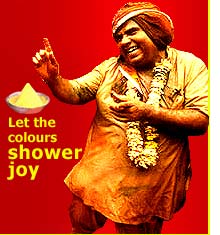 |
Holi » Holi Festival » History of Holi
History of Holi
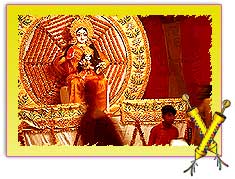 |
It is said that Holi existed several centuries before Christ. However, the meaning of the festival is believed to have changed over the years. Earlier it was a special rite performed by married women for the happiness and well-being of their families and the full moon (Raka) was worshiped.
Calculating the Day of Holi
There are two ways of reckoning a lunar month- 'purnimanta' and 'amanta'. In the former, the first day starts after the full moon; and in the latter, after the new moon. Though the amanta reckoning is more common now, the purnimanta was very much in vogue in the earlier days.
According to this purnimanta reckoning, Phalguna purnima was the last day of the year and the new year heralding the Vasanta-ritu (with spring starting from next day). Thus the full moon festival of Holika gradually became a festival of merrymaking, announcing the commencement of the spring season. This perhaps explains the other names of this festival - Vasanta-Mahotsava and Kama-Mahotsava.
Reference in Ancient Texts and Inscriptions
Besides having a detailed description in the Vedas and Puranas such as Narad Purana and Bhavishya Purana, the festival of Holi finds a mention in Jaimini Mimansa. A stone incription belonging to 300 BC found at Ramgarh in the province of Vindhya has mention of Holikotsav on it. King Harsha, too has mentioned about holikotsav in his work Ratnavali that was written during the 7th century.
The famous Muslim tourist - Ulbaruni too has mentioned about holikotsav in his historical memories. Other Muslim writers of that period have mentioned, that holikotsav were not only celebrated by the Hindus but also by the Muslims.
Reference in Ancient Paintings and Murals
 The festival of Holi also finds a reference in the sculptures on walls of old temples. A 16th century panel sculpted in a temple at Hampi, capital of Vijayanagar, shows a joyous scene of Holi. The painting depicts a Prince and his Princess standing amidst maids waiting with syringes or pichkaris to drench the Royal couple in coloured water.
The festival of Holi also finds a reference in the sculptures on walls of old temples. A 16th century panel sculpted in a temple at Hampi, capital of Vijayanagar, shows a joyous scene of Holi. The painting depicts a Prince and his Princess standing amidst maids waiting with syringes or pichkaris to drench the Royal couple in coloured water. A 16th century Ahmednagar painting is on the theme of Vasanta Ragini - spring song or music. It shows a royal couple sitting on a grand swing, while maidens are playing music and spraying colors with pichkaris.
There are a lot of other paintings and murals in the temples of medieval India which provide a pictoral description of Holi. For instance, a Mewar painting (circa 1755) shows the Maharana with his courtiers. While the ruler is bestowing gifts on some people, a merry dance is on, and in the center is a tank filled with colored water. Also, a Bundi miniature shows a king seated on a tusker and from a balcony above some damsels are showering gulal (colored powders) on him.
Legends and MythologyIn some parts of India, specially in Bengal and Orissa, Holi Purnima is also celebrated as the birthday of Shri Chaitanya Mahaprabhu (A.D. 1486-1533). However, the literal meaning of the word 'Holi' is 'burning'. There are various legends to explain the meaning of this word, most prominent of all is the legend associated with demon king Hiranyakashyap.
Hiranyakashyap wanted everybody in his kingdom to worship only him but to his great disappointment, his son, Prahlad became an ardent devotee of Lord Naarayana. Hiaranyakashyap commanded his sister, Holika to enter a blazing fire with Prahlad in her lap. Holika had a boon whereby she could enter fire without any damage on herself. However, she was not aware that the boon worked only when she enters the fire alone. As a result she paid a price for her sinister desires, while Prahlad was saved by the grace of the god for his extreme devotion. The festival, therefore, celebrates the victory of good over evil and also the triumph of devotion.
Legend of Lord Krishna is also associated with play with colors as the Lord started the tradition of play with colours by applying colour on his beloved Radha and other gopis. Gradually, the play gained popularity with the people and became a tradition.
There are also a few other legends associated with the festival - like the legend of Shiva and Kaamadeva and those of Ogress Dhundhi and Pootana. All depict triumph of good over evil - lending a philosophy to the festival.
| best netural holi ravi shankar gupta |

The rugged road to the twin villages of Dodra-Kwar in the Rupin valley. (Photograph by Harsh Man Rai)
The great outdoors and the doughty saddle are old friends. But when the road ends at Spiti and the pack is led by trusted OT hands, the combination has a lot of torque. Helmet Stories, an outfit run by bikers Harsh Man Rai and Vir Nakai, customises luxury trips to several Himalayan outposts and the Western Ghats. But the journey to Spiti is in a league of its own. Starting from Chandigarh, the 12-day trail snakes around Sangla and Kalpa in the Baspa valley, halts at the Nako lake before winding up at Tabo, Dhangkar monastery, Kaza and finally at the Drilbu Retreat in Tandi, perched over the confluence of the rivers Chandra and Bhaga. The last stretch of 100km runs along (and often on) the riverbed, making it the perfect terrain for adventure motorcycling. Riders who want to take it up by a notch can add a 3-day detour (before Sangla) on the new road over the Chanshal pass to the villages of Dodra and Kwar in the Rupin valley. COST Rs 1,20,000, inclusive of a Royal Enfield Bullet, fuel, stay, great meals; Rs 20,000 for the Rupin valley detour CONTACT 9867639753, helmetstories.com
 The magnificent Gangkar Puensum, Bhutan’s highest mountain, shimmers in the afternoon light
The magnificent Gangkar Puensum, Bhutan’s highest mountain, shimmers in the afternoon lightWe’re talking about one of the most beautiful countries in the world. And this trek is probably the most representative of the country’s physical beauty as well as its Tantric Buddhist culture. Taking in such sites as the famous Taktsang Palphug (Tiger’s Nest) Monastery, blue pine forests, beautiful lakes such as the Jimilang Tsho and Simkotra Tsho, as well as the towering peak of Gangkar Puensum, this trek is Bhutan in a nutshell. It’s best done from April to June and September to November. COST from $2,193 per person in a group of three for a six-day trek CONTACT +975-2333083, bhutangreentravel.com
 A Tarzan moment at the summer camp in Yercaud
A Tarzan moment at the summer camp in YercaudYoureka has been running adventure programmes for kids and adults for so long they are now virtually the village elders in the business. Those who’ve already experienced their wide-ranging hospitality, it’s time to get in touch again—and those who haven’t, well, we just told you. They run permanent camps as well as seasonal programmes at various locations around the country. Those in the South may already have checked out their Jungle Outback camp in Yercaud, but all ye living further away, why not give it a shot too? Set at a height of 5,100ft and surrounded by coffee plantations, the camp offers rock-climbing, rappelling, DIY camping, or simply relaxing in the wilderness. The tents are not luxurious, but clean and comfortable. TARIFF 2N/3D package Rs 5,250 per person, including all meals and two activities CONTACT 1800-103-3301, youreka.in
 A lazy evening at a charming village near Almora
A lazy evening at a charming village near AlmoraHill stations are no longer the coolest cubbyholes they used to be. Sun-struck travellers who once fled the plains now flee the hill stations! Offering them refuge are remote rural idylls that live and breathe the true pahadi air. Kumaon has a few lovely trails. One such is a five-day trot across its north-eastern flanks, led by the good folks at Itmenaan Estate, near Almora. Winding its way upwards from Kathgodam, through the villages of Thikalna and Ganghet, where traditional homes have been spruced up to receive guests, the village walk arrives at its last pit stop, Itmenaan’s 100-year-old stone house, coddled by ten acres of pine, oak and rhododendrons in bloom. COST Rs 4,000 per person on twin-sharing basis, inclusive of stay, meals and guide CONTACT 011-26122509, itmenaanlodges.com
 An all-women contingent on the Everest Base Camp trail
An all-women contingent on the Everest Base Camp trailLooking to inject the long, desultory summer months with a dose of adventure? The brand-new Active Holiday Company could have the answer for you. This home-grown travel firm specialises in ‘activity-based holidays’ across multiple continents: from cycling trips in Cambodia, Italy, France, Austria, Germany, the Czech Republic, New Zealand and Laos (some even include canoeing and kayaking) to African safaris and a host of trekking, marathon and diving vacations. It also customises holidays for families, solo travellers and women. Closer home is an old favourite: the classic Everest Base Camp trek in Nepal. The 14-day, ‘challenging’ trek takes you through pine forests along the Dudh Kosi river, to Tengboche, Dingboche, along the Khumbu glacier, Kala Patthar and more. COST Rs 92,950; includes meals, stay, transfers, domestic flights CONTACT 9886681381, activeholidaycompany.com
 A lovely, lush garden at the Heritage House
A lovely, lush garden at the Heritage HouseOver the years, Srinagar’s toniest and leafiest neighbourhood, Rajbagh, has gradually let tourism into its homes. Within easy distance of the city’s main attraction, the Dal lake and the busy boulevard that girdles it, this quiet residential area is lined with bungalows hidden from view by gardens overladen with apples and peaches, cherries and plums. Heritage House, which welcomed its first guest last year, is just such a place. A quaint six-room homestay, it’s run by the lovely Narboo family which also owns the iconic Hotel Shambhala in Leh. TARIFF Rs 4,500 for doubles, inclusive of breakfast CONTACT 9419177900, 9810035145, hotelshambhala.com
 The rustic, yet charming homestead of Ballu. (Photograph by Bibek Bhattacharya)
The rustic, yet charming homestead of Ballu. (Photograph by Bibek Bhattacharya)The Ballu is an old barn built near the village of Dari in Kangra, way back in 1903. A traditional mud structure, it was one of the few buildings in the Dharamsala region to survive the devastating earthquake of 1905. Now, it has been turned into a simple but charming homestay by KP and Seena, two long-time Malayali residents of the area. Set in the valley of the Chauran Nala, which drains the towering Mon peak of the Dhauladhar, this little place offers an authentic rural mudhouse experience. The couple provide delicious home-cooked meals and you could spend your time sitting around in the surrounding orchard, or go for walks up the valley and for picnics to the stream. TARIFF from Rs 700 doubles, inclusive of meals CONTACT 8679503494, facebook.com/theballuhomestay
 Karma Cottage, nestled in the Kullu valley
Karma Cottage, nestled in the Kullu valleyThe folks behind the Raj-themed Karma Vilas hotel in Mussoorie have now branched out to that other great tourist magnet—Manali. Thankfully situated away from the main drag, this full-fledged family getaway is set amid apple orchards and offers clear views of Rohtang Pass. Accommodation is in a choice of the simpler Classic rooms or the more ‘luxurious’ Royal rooms and suites. There’s a nice restaurant on the premises, and the resort offers various other facilities that make for a good family experience, including wi-fi, a gaming area for children and an open air café. TARIFF from Rs 6,000 doubles CONTACT 9811404640, karmavilas.com/karma-cottage/accomodation.html
 The cottages at Tiger Mountain, in the likeness of Nepali village homes
The cottages at Tiger Mountain, in the likeness of Nepali village homesIf you’re looking for a holiday in the hills that goes beyond the usual, yet is easy to plan, do consider Pokhara in Nepal. More specifically, just outside of Pokhara. Half an hour from the city, hanging on to the edge of a ridge up in the mountains, is the lovely Tiger Mountain Pokhara Lodge. Imitating a Nepali village with stone cottages clustered together, the property is anything but basic with elegant furniture, private balconies affording uninterrupted views of the Annapurna range and the valley, great meals created with organic ingredients, a pool, yoga and Ayurvedic treatments. And if you’re looking for a spot of action, it’s easy to head into town for some sightseeing and pretty lakeside meals in the several cafés around. TARIFF from $250 CONTACT +977-1 4426427, tigermountain pokhara.com
 A sit-out at Grass Roots
A sit-out at Grass Roots Wayanad is always magical. But if you manage to get yourself to this spectacularly located property, it may just seem miraculous. Set on a three-acre coffee estate at the foothills of Vythiri and surrounded by tea plantations, a bubbling stream and the jagged peaks of the Banasura range make Grass Roots a picture postcard you wish you could live in forever. Accommodation is in one of only five luxury tents, complete with all mod-cons. Activities at the camp include treks, village visits, Ayurvedic massages and plantation tours—there’s even an in-house ‘adventurist’ to set it all up for you. TARIFF Rs 6,500 doubles, all-inclusive; kids below eight stay free CONTACT 9845891013, grassrootswayanad.in
 A quick, unscheduled pit stop en route to Ladakh
A quick, unscheduled pit stop en route to LadakhBoth Kashmir and Ladakh make a compelling case for long-distance driving holidays. But if the fear of being stranded without help (in case the car breaks down) has prevented you from hitting the pedal, here’s your chance to wheel around the bend. This June, Adventures Overland is flagging off a 13-day self-drive trip from Manali to Srinagar. En route are Jispa village, Leh, Pangong Tso, Nubra valley, Turtuk and Kargil, and the many rivers and high passes that make this one of the world’s best routes. COST Rs 65,000 per person on twin-sharing basis; includes meals, stay, backup team, permits, etc, excludes fuel CONTACT 0124-4046316, adventuresoverland.com
 The Dhauladhar rise behind the Deer Park’s gilded, pagoda-style roof
The Dhauladhar rise behind the Deer Park’s gilded, pagoda-style roof
the list
Summer Highs
The season’s nearly here and you better get going—20 holiday ideas to help you keep your cool

The rugged road to the twin villages of Dodra-Kwar in the Rupin valley. (Photograph by Harsh Man Rai)
The great outdoors and the doughty saddle are old friends. But when the road ends at Spiti and the pack is led by trusted OT hands, the combination has a lot of torque. Helmet Stories, an outfit run by bikers Harsh Man Rai and Vir Nakai, customises luxury trips to several Himalayan outposts and the Western Ghats. But the journey to Spiti is in a league of its own. Starting from Chandigarh, the 12-day trail snakes around Sangla and Kalpa in the Baspa valley, halts at the Nako lake before winding up at Tabo, Dhangkar monastery, Kaza and finally at the Drilbu Retreat in Tandi, perched over the confluence of the rivers Chandra and Bhaga. The last stretch of 100km runs along (and often on) the riverbed, making it the perfect terrain for adventure motorcycling. Riders who want to take it up by a notch can add a 3-day detour (before Sangla) on the new road over the Chanshal pass to the villages of Dodra and Kwar in the Rupin valley. COST Rs 1,20,000, inclusive of a Royal Enfield Bullet, fuel, stay, great meals; Rs 20,000 for the Rupin valley detour CONTACT 9867639753, helmetstories.com
 The magnificent Gangkar Puensum, Bhutan’s highest mountain, shimmers in the afternoon light
The magnificent Gangkar Puensum, Bhutan’s highest mountain, shimmers in the afternoon lightWe’re talking about one of the most beautiful countries in the world. And this trek is probably the most representative of the country’s physical beauty as well as its Tantric Buddhist culture. Taking in such sites as the famous Taktsang Palphug (Tiger’s Nest) Monastery, blue pine forests, beautiful lakes such as the Jimilang Tsho and Simkotra Tsho, as well as the towering peak of Gangkar Puensum, this trek is Bhutan in a nutshell. It’s best done from April to June and September to November. COST from $2,193 per person in a group of three for a six-day trek CONTACT +975-2333083, bhutangreentravel.com
 A Tarzan moment at the summer camp in Yercaud
A Tarzan moment at the summer camp in YercaudYoureka has been running adventure programmes for kids and adults for so long they are now virtually the village elders in the business. Those who’ve already experienced their wide-ranging hospitality, it’s time to get in touch again—and those who haven’t, well, we just told you. They run permanent camps as well as seasonal programmes at various locations around the country. Those in the South may already have checked out their Jungle Outback camp in Yercaud, but all ye living further away, why not give it a shot too? Set at a height of 5,100ft and surrounded by coffee plantations, the camp offers rock-climbing, rappelling, DIY camping, or simply relaxing in the wilderness. The tents are not luxurious, but clean and comfortable. TARIFF 2N/3D package Rs 5,250 per person, including all meals and two activities CONTACT 1800-103-3301, youreka.in
 A lazy evening at a charming village near Almora
A lazy evening at a charming village near AlmoraHill stations are no longer the coolest cubbyholes they used to be. Sun-struck travellers who once fled the plains now flee the hill stations! Offering them refuge are remote rural idylls that live and breathe the true pahadi air. Kumaon has a few lovely trails. One such is a five-day trot across its north-eastern flanks, led by the good folks at Itmenaan Estate, near Almora. Winding its way upwards from Kathgodam, through the villages of Thikalna and Ganghet, where traditional homes have been spruced up to receive guests, the village walk arrives at its last pit stop, Itmenaan’s 100-year-old stone house, coddled by ten acres of pine, oak and rhododendrons in bloom. COST Rs 4,000 per person on twin-sharing basis, inclusive of stay, meals and guide CONTACT 011-26122509, itmenaanlodges.com
 An all-women contingent on the Everest Base Camp trail
An all-women contingent on the Everest Base Camp trailLooking to inject the long, desultory summer months with a dose of adventure? The brand-new Active Holiday Company could have the answer for you. This home-grown travel firm specialises in ‘activity-based holidays’ across multiple continents: from cycling trips in Cambodia, Italy, France, Austria, Germany, the Czech Republic, New Zealand and Laos (some even include canoeing and kayaking) to African safaris and a host of trekking, marathon and diving vacations. It also customises holidays for families, solo travellers and women. Closer home is an old favourite: the classic Everest Base Camp trek in Nepal. The 14-day, ‘challenging’ trek takes you through pine forests along the Dudh Kosi river, to Tengboche, Dingboche, along the Khumbu glacier, Kala Patthar and more. COST Rs 92,950; includes meals, stay, transfers, domestic flights CONTACT 9886681381, activeholidaycompany.com
 A lovely, lush garden at the Heritage House
A lovely, lush garden at the Heritage HouseOver the years, Srinagar’s toniest and leafiest neighbourhood, Rajbagh, has gradually let tourism into its homes. Within easy distance of the city’s main attraction, the Dal lake and the busy boulevard that girdles it, this quiet residential area is lined with bungalows hidden from view by gardens overladen with apples and peaches, cherries and plums. Heritage House, which welcomed its first guest last year, is just such a place. A quaint six-room homestay, it’s run by the lovely Narboo family which also owns the iconic Hotel Shambhala in Leh. TARIFF Rs 4,500 for doubles, inclusive of breakfast CONTACT 9419177900, 9810035145, hotelshambhala.com
 The rustic, yet charming homestead of Ballu. (Photograph by Bibek Bhattacharya)
The rustic, yet charming homestead of Ballu. (Photograph by Bibek Bhattacharya)The Ballu is an old barn built near the village of Dari in Kangra, way back in 1903. A traditional mud structure, it was one of the few buildings in the Dharamsala region to survive the devastating earthquake of 1905. Now, it has been turned into a simple but charming homestay by KP and Seena, two long-time Malayali residents of the area. Set in the valley of the Chauran Nala, which drains the towering Mon peak of the Dhauladhar, this little place offers an authentic rural mudhouse experience. The couple provide delicious home-cooked meals and you could spend your time sitting around in the surrounding orchard, or go for walks up the valley and for picnics to the stream. TARIFF from Rs 700 doubles, inclusive of meals CONTACT 8679503494, facebook.com/theballuhomestay
 Karma Cottage, nestled in the Kullu valley
Karma Cottage, nestled in the Kullu valleyThe folks behind the Raj-themed Karma Vilas hotel in Mussoorie have now branched out to that other great tourist magnet—Manali. Thankfully situated away from the main drag, this full-fledged family getaway is set amid apple orchards and offers clear views of Rohtang Pass. Accommodation is in a choice of the simpler Classic rooms or the more ‘luxurious’ Royal rooms and suites. There’s a nice restaurant on the premises, and the resort offers various other facilities that make for a good family experience, including wi-fi, a gaming area for children and an open air café. TARIFF from Rs 6,000 doubles CONTACT 9811404640, karmavilas.com/karma-cottage/accomodation.html
 The cottages at Tiger Mountain, in the likeness of Nepali village homes
The cottages at Tiger Mountain, in the likeness of Nepali village homesIf you’re looking for a holiday in the hills that goes beyond the usual, yet is easy to plan, do consider Pokhara in Nepal. More specifically, just outside of Pokhara. Half an hour from the city, hanging on to the edge of a ridge up in the mountains, is the lovely Tiger Mountain Pokhara Lodge. Imitating a Nepali village with stone cottages clustered together, the property is anything but basic with elegant furniture, private balconies affording uninterrupted views of the Annapurna range and the valley, great meals created with organic ingredients, a pool, yoga and Ayurvedic treatments. And if you’re looking for a spot of action, it’s easy to head into town for some sightseeing and pretty lakeside meals in the several cafés around. TARIFF from $250 CONTACT +977-1 4426427, tigermountain pokhara.com
 A sit-out at Grass Roots
A sit-out at Grass Roots Wayanad is always magical. But if you manage to get yourself to this spectacularly located property, it may just seem miraculous. Set on a three-acre coffee estate at the foothills of Vythiri and surrounded by tea plantations, a bubbling stream and the jagged peaks of the Banasura range make Grass Roots a picture postcard you wish you could live in forever. Accommodation is in one of only five luxury tents, complete with all mod-cons. Activities at the camp include treks, village visits, Ayurvedic massages and plantation tours—there’s even an in-house ‘adventurist’ to set it all up for you. TARIFF Rs 6,500 doubles, all-inclusive; kids below eight stay free CONTACT 9845891013, grassrootswayanad.in
 A quick, unscheduled pit stop en route to Ladakh
A quick, unscheduled pit stop en route to LadakhBoth Kashmir and Ladakh make a compelling case for long-distance driving holidays. But if the fear of being stranded without help (in case the car breaks down) has prevented you from hitting the pedal, here’s your chance to wheel around the bend. This June, Adventures Overland is flagging off a 13-day self-drive trip from Manali to Srinagar. En route are Jispa village, Leh, Pangong Tso, Nubra valley, Turtuk and Kargil, and the many rivers and high passes that make this one of the world’s best routes. COST Rs 65,000 per person on twin-sharing basis; includes meals, stay, backup team, permits, etc, excludes fuel CONTACT 0124-4046316, adventuresoverland.com
 The Dhauladhar rise behind the Deer Park’s gilded, pagoda-style roof
The Dhauladhar rise behind the Deer Park’s gilded, pagoda-style roofA couple of weeks of Tibetan language courses, or a spot of Mahamudra meditation, or learning calligraphy or ikebana in the lap of the verdant mountains of Kangra. Sounds like a perfect, worthy summer vacation? You can do all this and more at the Deer Park Institute in the small town of Bir in Himachal. Established in 2006, Deer Park is a project under the Siddhartha’s Intent Society. It offers a host of artistic and cultural courses through the year completely free of charge (donations are appreciated though). From readings of ancient Tamil Buddhist literature to enactment of Marathi folktales, there’s hardly a dull moment, and you could even go paragliding or trekking in the Dhauladhar range. CONTACT 01984-268508, deerpark.in
 The Seagreen Lodge. (Photograph by Sanjeev Kamdar)
The Seagreen Lodge. (Photograph by Sanjeev Kamdar)This one’s for birding enthusiasts. The Bombay Natural History Society (BNHS), dedicated to the conservation of nature, this month has on offer among its several nature trails and camps, birdwatching at Benog Tibba in the Benog Wildlife Sanctuary in Mussoorie. Part of the Rajaji National Park, the hill’s pine-clad slopes are home to a staggering assortment of birds, including the black-breasted sunbird, great barbet, red-billed and yellow-billed magpie, white-capped water redstart, mountain hawk-eagle and many, many more. The guided four-day trek involves some uphill walks that aren’t too tough, but would require some stamina. This trip is scheduled for April 20–24, so hurry. COST Rs 12,500 for members/Rs 13,100 for non-members; includes accommodation at Seegreen Lodges, all meals, transfers to and from Delhi, permits and entry to the park CONTACT 022-22821811, bnhs.org
 Warm, soothing tones in a spacious bedroom at Terra Rosa. (Photograph by Amit Pasricha)
Warm, soothing tones in a spacious bedroom at Terra Rosa. (Photograph by Amit Pasricha)Yes, Goa’s going to be warm at this time of the year. But to compensate is peace and quiet and a stunningly renovated Portuguese villa all to yourself. Terra Rossa is set on Chorao island, lush with greenery and dotted with a few churches and the odd house. The property is a labour of love for architect Amrita and her husband Vineet. The sprawling, airy mansion, centred around a leafy courtyard and a soothing water body, displays tasteful interiors, while catering to all comforts. There are four bedrooms, a modern kitchen, laundry, housekeeping and a swimming pool too—everything to ensure you don’t leave in a hurry. TARIFF from Rs 17,000 per night for the villa; minimum stay one week CONTACT 9822146880, contact@luxurygoavillas.com

The new cottages at Sitla Estate in the twilight
You’ve read about this little lodge high up in the Kumaon hills a few hundred times in this magazine. And each time we’ve featured it, it’s been unapologetically: and that’s because not only is Sitla Estate lovely, there’s always something new and thrilling to say about it. This summer, Sitla faithfuls can expect a surprise when they make their annual pilgrimage to Vikram Maira’s estate—a clutch of chic new cottages awaits them. In contrast to the stone-and-wood, rustic aesthetic of the cottages that the familiars know, these are done in contemporary style—six spacious suites with modern bathrooms, all opening out to a private sitout. TARIFF from Rs 8,000 doubles, all inclusive CONTACT 05942-286330, sitlaestate.net
 An almost vertical climb upto Traill’s Pass
An almost vertical climb upto Traill’s Pass Of all the hundreds of treks possible in the Himalaya, arguably the best are those that cross the Great Himalayan Range itself. And there are few as challenging or as spectacular as Traill’s Pass in Kumaon, which connects the watersheds of the Pindar and the Gori Ganga rivers. A technical climb across the bergshrunds and ice cliffs of the Pindari glacier, this pass was named after the British administrator G.W. Traill, who crossed it in 1830 to try and open up a new trading route with Tibet. Looking out at Nanda Devi, Nanda Kot and a host of other Himalayan giants, Traill’s Pass, or Pindari Kanda, is a classic Himalayan trek. Aquaterra is organising this trek from May 24 to June 12. COST Rs 96,000 plus taxes per head CONTACT 011-29212641, aquaterra.in
 Meghalaya’s gloriously green environs. (Photograph by Kalyan Verma)
Meghalaya’s gloriously green environs. (Photograph by Kalyan Verma)The unique location of Meghalaya’s Garo hills makes it the wettest region in the country. Not surprisingly, this has resulted in an extensive and lush forest cover. With the presence of animals like the palm civet, golden cat and slow loris, the state is richly endowed with biological diversity. Wishbone’s 10-day overland journey takes you into the heart of Meghalaya with visits to the Baghmara and Balpakram sanctuaries, and places such as Karwani, a butterfly hotspot. Local knowledge as well as a team of wildlife experts play a part in informing the journey, with homestays, an introduction to local customs and traditional food adding to the experience. You can go birdwatching, or get a crash course in the state’s endemic butterflies and visit pristine sites like the Rongdok waterfall. The trip is planned between April 19 and 28 this year. COST Rs 54,000 per person, all-inclusive CONTACT 9886169698, wishbone.co.in
 Planter’s bungalow on a hill
Planter’s bungalow on a hillIn an obscure corner at the foot of the Naga hills, on the border that divides Nagaland and Assam, lies a tempting holiday option for the summer. A nineteenth-century planter’s bungalow atop a hill and amid rolling tea gardens in Gabroopurbat has opened its doors to the world with the promise of a peaceful, homey stay. The Retreat on Hill Gabroopurbat offers four spacious air-conditioned rooms with attached bathrooms and a common area. And while it also provides an ‘entertainment arena’—a small library, a card table and a gramophone—it would be a shame not to venture out and enjoy wildlife spotting at Kaziranga (2hrs away) or Dissoi Valley (20kms away) or the scenic Majuli Island on the Brahmaputra (90mins away). TARIFF from Rs 3,000 CONTACT 9830822937, gabroopurbat.com
 The blooming gardens of the Grand Hotel at Nuwara Eliya . (Photograph by Getty Images, From Outlook Traveller April Issue, 2013)
The blooming gardens of the Grand Hotel at Nuwara Eliya . (Photograph by Getty Images, From Outlook Traveller April Issue, 2013)April is not the cruellest month—not in Nuwara Eliya anyway. Planted in Sri Lanka’s tea-growing upcountry hills, the colonial resort town blooms in the soft summer sun. Roses and poppies, sweet william and sunflowers run riot in the sprawling Victoria Park and Hakgala Botanical Garden, and on the lawns of the Colonial Hotel, British Club, Grand Hotel and the Hill Club. Private grounds teem too with blossoms of every imaginable hue as locals prepare for the annual flower shows and competitions. Our only advice: avoid the mid-month rush, when the country celebrates its New Year. COST $2,400 for a couple for 8 days, inclusive of stay at a boutique hotel, most meals, sightseeing and local transport CONTACT 8974086709, getoffurass.com
 Young riders of the storm on the Tons
Young riders of the storm on the TonsSummer camps are often not camps at all. But Himalayan Outward Bound’s The Summer Odyssey promises to put campfires and rafting (in the Tons), pitching tents and waking up to sweeping views of the mountains (of Garhwal) back on the agenda. A ten-day expedition for children aged between 14 and 16, the Odyssey’s many adventures also include a chance to live the village life—perhaps a first for many city-bred kids (May 26-June 4). A fine way to make new friends and pick up a few life skills, there’s a separate camp for younger children too; at least, 12 years old and accompanied by a parent (June 23-July 2). COST Rs 27,700 per person, all inclusive CONTACT 011-26196082, outwardboundindia.com
Autumn Flower Show
Meghalaya, one of the most important states of north east India is famous for its natural beauty and serene atmosphere. Flowers are one of the most attractive gifts of nature and holds special place in the hearts of all people. The Autumn Flower show held in Meghalaya is one of its kind in India. The variety and range of flowers found in the state of Meghalaya is the most exquisite.

The Autumn flower show is an annual event that is celebrated with great fun and frolic in the state of Meghalaya. It is organized in the months of October- November. Specifically the show is an exhibition of different varieties of decorative flowers. This show is exhibited in the All Saints Hall of Shillong which is situated in the East Khasi Hills. The exhibition is known for its rare floral collection and the range of plants that are displayed here.

Sunflowers, fire bush trees, different types of hibiscus, zinnias, crepe myrtle, lotus and other beautiful flowers are displayed in the Autumn Flower Exhibition at Meghalaya.
The natives of Meghalaya along with nature and flower lovers from all over India come here during the months of October-November to witness this grand spectacle of flora.
Although over the years many such shows are organized in different parts of the country, a number of states, yet the Autumn Flower Show of Meghalaya holds its distinction and uniqueness till date.

Sunflowers, fire bush trees, different types of hibiscus, zinnias, crepe myrtle, lotus and other beautiful flowers are displayed in the Autumn Flower Exhibition at Meghalaya.
The natives of Meghalaya along with nature and flower lovers from all over India come here during the months of October-November to witness this grand spectacle of flora.
Although over the years many such shows are organized in different parts of the country, a number of states, yet the Autumn Flower Show of Meghalaya holds its distinction and uniqueness till date.




